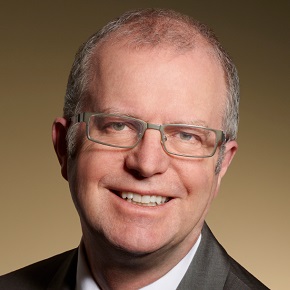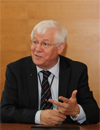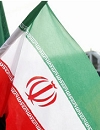 |
||
|
The ISTC Responsible Science Program and Subprogram Culture of Nuclear Nonproliferation V.Murogov, H.Visser, PUBLISHED 20.07.2014 Introduction The dual-use nature of nuclear technology consisting in the potential for its application equally in peaceful and military sphere is the basic contradiction for the existing nuclear nonproliferation regime and comprehensive development of the nuclear power and nuclear fuel cycle. The associated antagonism between the need for the development of civil nuclear power, extension of countries range and areas of peaceful application, on the one hand, and the risk of transferring nuclear technologies and fissile materials that could be applied in the military sphere, on the other hand, defines the principal threat to the nonproliferation regime. Moreover, the tension of the situation in nuclear nonproliferation at the beginning of the new millennium coincided with a new cycle of renewed interest to nuclear power as well as to plans and efforts focused on further development of innovative technologies (small-size nuclear power plants for developing countries, breeder reactors with closed nuclear fuel cycle with reprocessing and recycling of fissile materials, high-efficiency technology of centrifugal enrichment, etc.), which would inevitably result in the increasing risk of stealing fissile materials and misuse of nuclear technologies. This is particularly evident in view of the increasing threat of nuclear or radiological terrorism and the widening scope of potential peaceful application of nuclear science and technology. The prevention of proliferation is nowadays more urgent than ever. Under these circumstances, it becomes more evident that only institutional, technological and prohibitive measures do not provide an absolute guarantee, especially in the context of potential threat of nuclear and radiological terrorism. As a natural result, towards these challenges there appear projects oriented on development and promotion of nuclear nonproliferation culture. One of them is the Nuclear Nonproliferation Culture Subprogram which is realizing in the framework of the Responsible Science Program - a new project of the International Science and Technology Center (ISTC). This program is intended to support activities that contribute to the creation of an international culture of responsible science and knowledge management with a particular focus on the scientific areas in which ISTC has competencies. The Subprogram has been under implementation at the ISTC since April 2010. The objective of the Subprogram is to promote the responsible management of science in the area of nonproliferation of sensitive knowledge and technologies. The nuclear engineering was selected as a pilot area for the program, taking into account today's status of the subject: sensitive technologies and knowledge dealing with the potential for dual use, specific legislation, nuclear materials control, export control, international activity and educational programs. The main practical objective of the Subprogram can be considered as the creation and development of scientific and methodological foundations of a new integrated discipline - "Nuclear Nonproliferation Culture". This discipline is aimed to development of a general set of hard and soft science subjects from the nuclear law to engineering and technological issues, covering both the problems of nuclear power development and those associated with the spread of knowledge, expertise, technologies and materials in different spheres of human activities. The program consists of the following pillars: education activity (preparation lecture courses, training modules, etc.); scientific activities (analytics, scientific papers and reviews, assessment tools development, etc.); information activity (publishing monographs and tutorials; internationalcooperation and conferences). Since April 2010 it has resulted in upgrading of education and training courses on safety, security and nonproliferation. This program corresponds directly to the ISTC key objective - to ensure nonproliferation of dangerous knowledge and technologies. The results of the Subprogram realization provided broaden nuclear engineering and technology curricula by developing soft and hard sciences (such as risk analysis, nuclear law, etc.) disciplines, suggesting effective informational exchange, sharing ideas in the nuclear nonproliferation area, and making more available local, national and international cooperation. Subprogram Overview The analysis of the development of the ISTC - NRNU MEPhI Project SB 159 "Nuclear Nonproliferation Culture" along with the results of its implementation demonstrates not only the importance but also timeliness and exceptional urgency of this direction of activities. The matter is that the recent events, i.e. the severe accidents in Japan (4 nuclear reactors and 3 SNF storages) as well as complicated relations between the global community and some states based on potential violations of nonproliferation regime have identified the most acute and sensitive problems in the world nuclear power development: safety of nuclear reactors and NFC facilities (both nuclear and radiation safety) and nonproliferation. As Dr. ElBaradei, the former IAEA director general, said before his resignation: "With the existing nonproliferation regime being kept for following decades, more than 20 new states with nuclear weapon are likely to appear". That is, nuclear safety and nuclear nonproliferation are the main challenges to the large-scale nuclear power development. Then, if the problem of nuclear safety has been fully realized by the world community, and the nuclear safety culture has become an integral part of nuclear activity - from nuclear education, development, construction and control to total waste disposal - the situation with the implementation of nuclear nonproliferation culture has proved to be more complicated. At the same time, it is of no less importance, and probably in the near future (with the problem of nuclear security being solved based on Generation IV reactor NPPs) - it would be a problem of greater importance which determines the future full-scale nuclear power development. In spite of the last accidents in Japan and partial revision of plans for nuclear power development in a number of countries, more than 20 new states appealed to the IAEA for the assistance in construction of NPPs and nuclear power development. The transfer of nuclear technologies, experience and knowledge to these new states requires strict observance of nonproliferation regime and the development of nuclear nonproliferation culture in these countries. The number of member states in the IAEA INPRO project has significantly increased. It is but well known that the culture is achieved through an appropriate education system and development of "nuclear" specialists' responsibility before the public. These are the goals that were made the cornerstone during the planning and implementation of the work program under the ISTC - NRNU MEPhI project SB 159. It was realized that NRNU MEPhI as the major Rosatom university provided the basis for the system of education and training of nuclear specialists not only in Russia but in the CIS and 21 developing countries, with which Rosatom signed cooperation agreements, primarily, for training national personnel for nuclear power industry in these countries. The Project involved the activities on the following main related sections: a) Organizational activity; b) Educational activity; c) Scientific reviews; d) International cooperation; e) Information activity. As a result of the implementation of the objectives within the framework of SB 159 Project, the following was performed. Section A. Organizational Activity To organize the fulfillment of Project work coordination among the NRNU MEPhI system institutes (24 organizations) with the involvement of staff from scientific centers (including NRC Kurchatov Institute, IPPE, NIKIET, ATOMPROF etc) and invited professors from other universities with nuclear departments (outside the NRNU MEPhI system) was delegated to the International Nuclear Education Center (Director V.M. Murogov). To coordinate the works in the Ural and Siberian regions, the Nuclear Nonproliferation Center (Head - V. Boyko, Project participant - M. Silaev) with the analogue functions was established in the Tomsk Polytechnic University (TPU). The both centers work in close cooperation and participate in the implementation of corresponding IAEA departments and programs (Department of Nuclear Energy, Department of Nuclear Safety and Security, Department of Technical Cooperation). Section B. Educational Activity The existing system of nuclear education in the NRNU MEPhI, INPE and TPU, which are the main platforms for training specialists in the area of peaceful uses of nuclear energy, was supplemented and reformed. New courses were introduced - from a course of introductory lectures for students titled "Nuclear Power Basic Technologies" to lectures for masters, postgraduates, young specialists and managers (NPP directors and chief engineers) - under the general title "Scientific-Technical and Social-Political Problems of the Nuclear Power Development". This activity has been reflected in new courses at the NRNU MEPhI, INPE and TPU departments and supported by the publication of new textbooks and lecture courses (both in Russian and English) - for students of the Institute of International Relations NRNU MEPhI and students from developing countries. The lectures include information on all nonproliferation issues: from the general principles (in introductory lectures) to the detailed analysis of the international nonproliferation regime, its achievements and problems. Two textbooks (in Russian and English) fully covering the subject "Nuclear Nonproliferation" and "Fundamentals of Nuclear Materials Physical Protection, Control and Accountability" were highly appreciated by the IAEA and U.S. universities. The translation of some handbooks into English makes it possible to promote these materials through the cooperation with IAEA to developing countries and CIS states. During the years of realization the following education materials were created: 1. Tutorial "Approaches to and methods for quantitative assessment of nuclear proliferation risk" (in English). 2. Tutorial "Introduction to nuclear nonproliferation" (in English). 3. Tutorial NS3 "Nuclear energy, nuclear fuel cycle and applied nuclear technologies" (in Russian). 4. Tutorial NS4 "Methods and devices for measurement of nuclear and other radioactive materials" (in Russian). 5. Textbook "Nuclear Technology: History, State and Technical Challenges of Nuclear Power Development" (in English and Russian). 6. Lecture course "Scientific-technical and social-political problems of nuclear power development" (in English and Russian). 7. Tutorial "Optimization of nuclear power systems by the IAEA's energy planning tool MESSAGE" (in Russian). 8. Tutorial "Innovative nuclear reactors" (in English). 9. Tutorial "Introduction to nuclear nonproliferation for colleges" (in Russian). 10. Revised edition of tutorial "Nuclear technologies" (in Russian). 11. Tutorial NS8 "Technologies and equipment of physical protection systems" (in Russian). 12. Tutorial "Nuclear nonproliferation" in collaboration with the PIR-center (in English). 13. Lecture course "Comparative evaluation of nuclear fuel cycles from the nuclear proliferation standpoint" (in English). 14. Training manual "Environment protection in closed nuclear fuel cycle and problems of nuclear nonproliferation" (in Russian). 15. Training manual "New potential role of fusion hybrids in nuclear nonproliferation ensuring within the frames of the international closed nuclear fuel cycle with application of thorium technologies" (in Russian). Section C. Scientific reviews As a result of the project implementation, a number of scientific reviews were published, which present good handbooks as well as a basis for improved and new learning courses. In particular, the project implementation made it possible to achieve outstanding results (in IAEA specialists' opinion) in scientific developments of methodologies for the assessment of nuclear proliferation risk and the development of a mathematical model and software product forits numerical evaluation. This result is a real breakthrough in the development of this subject, and by the request of IAEA experts "Approaches to and methods for quantitative assessment of nuclear proliferation risk"were published in English via the ISTC. The scientific results obtained offered the first ever opportunity to prepare a handbook of recommendations on the assessment of proliferation risk in various areas of industrial activity of countries with a different level of development. Section D. International Cooperation One of the main results is that the ISTC project promoted an active involvement of project performers into the IAEA corresponding programs: the INSEN, INPRO, Knowledge management, and others. The results of the Project works are widely discussed by the scientific and academic community at the annual (February 2010, 2011, 2012) Workshop - Round table "Nuclear Nonproliferation Culture" held within the framework of the NRNU MEPhI International Conference. At this workshop, new Project results were also presented and discussed with the participation of representatives from the IAEA, ISTC, Oregon and Texas Universities and Russian scientific-research centers. This workshop has got the status of the International Workshop of CIS countries and it drew a wide response in mass media. The Project participants are regularly invited to make presentations on the subject of nonproliferation at international forums focused on the problems of nuclear power development in the framework of IAEA corresponding activities; INSEN - regular workshops on education in the field of nuclear nonproliferation in Vienna; participation, preparation of papers and analytical materials for regular workshops on the problem of nuclear knowledge management in Vienna; Rosatom - International workshop on nuclear knowledge management in Gelendzhik; Saint-Petersburg - International courses for professors "Disarmament and Nuclear Nonproliferation"; NRNU MEPhI conferences and workshops ("VOLGA", Scientific sessions, "NPP and NFC Safety and Role of Nuclear Education", etc.); regular international conferences in the area of nuclear education (United Arab Emirates - 2010, Czech Republic, Prague and Poland, Warsaw - 2010, 2011); preparation and delivering a course of lectures "Prospects of nuclear power development and Problem of Nuclear Nonproliferation" within the framework of International Workshops organized by PIR-Center (Zvenigorod, Seliger, etc.). A new actual direction in the educational and analytical activity is the analysis and preparation of education materials for postgraduates, specialists and managers of different levels based on many years' experience in the work of INPRO IAEA project. This means the analysis and dissemination of the methodology and requirements to innovative nuclear technologies. The work has been already started in close cooperation with the IAEA and under Rosatom's support. Two special meeting were held in the IAEA with the financial support of participants from Russia and CIS provided by the ISTC program. Section E. Information Activity The last but not least result is that there has been a success in the development of the system of distribution and promotion of the Project results into mass media, on the one hand, and a common information education space on the subject "Nuclear Nonproliferation and Nuclear Education", on the other hand. The website of the Project was initiated and provided by organizational and information support on the NRNU MEPhI portal dedicated to nuclear education (news and analytical reports, handbooks) (www.icne.mephi.ru). The web site on nonproliferation (http://np.icne.mephi.ru) is fully dedicated to the activity within the framework of the SB 159 Project. Regular updating of the Project web sites is performed through exchange of analytical materials and news between collaborators from the IAEA, Texas University (U.S.), Russian scientific and educational centers, etc. The average site frequency is about 200 to 300 sessions per day, which speaks for the appearance and availability of stable audience.
Topics: Opinions, Victor Murogov Other news: Russia May Sign Agreement to Build 8 Reactors in Iran A source close to the negotiations told journalists Thursday. Hungary Enacts Law to Expand Nuclear Power With Russian Aid Hungary’s president has signed a bill into law to expand a nuclear power plant in the country with Russian assistance. Hungary Lawmakers OK Russia Nuclear Plant Deal Russia will provide Hungary a loan of up to 10 billion euros ($13.5 billion) - around 80 percent of construction costs. |
Hero of the day 
We are currently working with the Nuclear Decommissioning Authority (NDA) on this approach, which was submitted in response to their February 2012 call for alternative proposals. We appreciate that the UK is in the early stages of their policy development activities and are pleased to be involved in such important work. INTERVIEW
Yanko Yanev OPINION
Joint Plan of Action Last news:
|
Licence Эл №ФС77-30792. ATOMINFO™ trademark.

